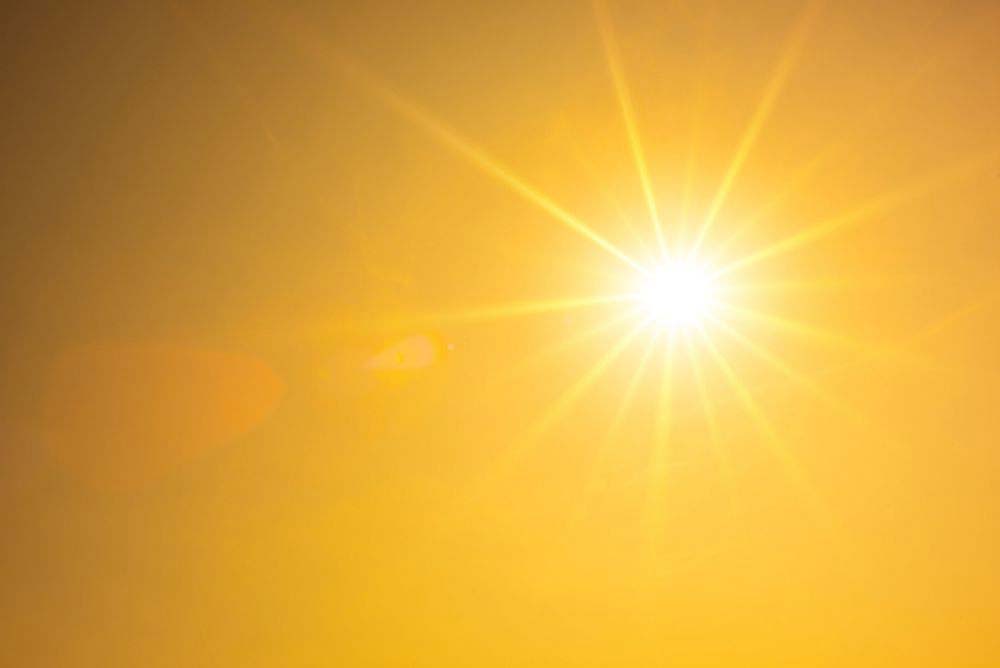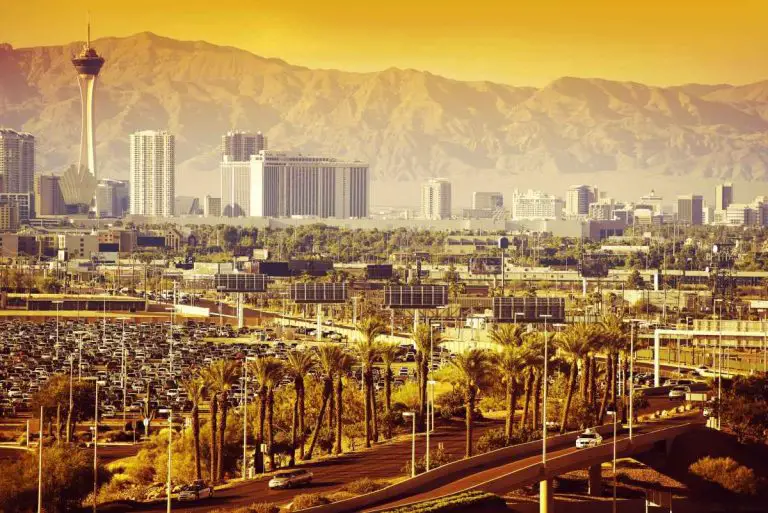Is Phoenix Hotter Than Vegas? (All You Need to Know!)
Let’s face it, both Phoenix, Arizona and Las Vegas, Nevada are hot! During the summer it’s literally hot enough to fry an egg on the sidewalk in either city but you may be asking yourself: Is Phoenix hotter than Vegas?
While Phoenix and Las Vegas both experience similar high temperatures during the peak of summer, Phoenix is five to nine degrees hotter than Vegas on average throughout the rest of the year. Phoenix also has higher overall humidity than Las Vegas at times of the year, making it feel even warmer.
Keep reading to discover the similarities and differences between the hot weather in Phoenix and Las Vegas.

Las Vegas vs Phoenix Weather
Let’s start with the similarities between the two cities when it comes to climate and weather. First, we all know that Phoenix and Las Vegas can get crazy hot in the summer!
During June, July, and August both Phoenix and Vegas have an average daily high temperature of around 105 degrees Fahrenheit (41°C) with Phoenix being maybe a degree or two hotter on any given day. As this is an average, there are days that get much hotter.
It’s not uncommon to have days with highs of around 113 degrees (45°C) in either city.
It’s once you get into the non-summer months, that the temperature differences between Phoenix and Vegas become more apparent. Phoenix has an average yearly high temperature of 87 degrees (31°C) while Las Vegas’s average yearly high temp is just 82 degrees (28°C).
The following table shows the average high and low temperatures in Phoenix and Las Vegas for each month of the year:
| Month | Phoenix High/Low (°F) | Las Vegas High/Low (°F) |
|---|---|---|
| January | 68° / 45° | 59° / 28° |
| February | 72° / 48° | 66° / 33° |
| March | 77° / 52° | 72° / 39° |
| April | 86° / 59° | 81° / 45° |
| May | 94° / 67° | 90° / 53° |
| June | 104° / 76° | 102° / 61° |
| July | 106° / 82° | 107° / 67° |
| August | 105° / 81° | 104° / 66° |
| September | 100° / 75° | 96° / 57° |
| October | 89° / 64° | 83° / 46° |
| November | 76° / 51° | 70° / 35° |
| December | 68° / 44° | 60° / 27° |
Notice that aside from the hottest months of the year, the table shows that Phoenix is significantly hotter on average than Las Vegas for the majority of the months. Most of the time Phoenix is 5 – 9 degrees warmer.
Even in the coldest months of the year, December and January, Phoenix is about 8 – 9 degrees warmer on average than Las Vegas.
Also interesting to note is that in the summer months, the high temperatures in Phoenix and Las Vegas are quite similar. However, when you take a look and compare the average low temperatures for June, July, and August. You’ll see that during these months the average low temperature is quite a bit lower in Las Vegas than it is in Phoenix.
If you keep looking at the table you’ll see that this is true throughout the year. Why does Phoenix stay warmer at night, while Las Vegas is able to cool off somewhat? The reason has to do mostly with the differences in elevation between the cities.
If you want to know why Las Vegas gets so hot, check out our article here. We’ll also show you some great ways to stay cool!
High Desert vs Low Desert
Phoenix sits at an elevation of approximately 1,086 feet above sea level, while Las Vegas sits higher at 2,001 feet. So even though Phoenix and Las Vegas are both desert cities, Phoenix is classified as being in a low desert and Las Vegas is considered to be in a high desert.
“High” and “Low” deserts are informal terms scientifically speaking but generally any desert below 2,000 ft is considered a low desert while any desert region over 2,000 ft is referred to as a high desert.
In terms of understanding the average low temperature differences between Las Vegas and Phoenix, it comes down to the fact that the higher in elevation you go, the more rapidly heat dissipates.
In other words, Las Vegas loses heat faster at night than Phoenix simply because it’s higher up in the atmosphere. Once the sun goes down, Las Vegas begins to cool off more quickly while Phoenix tends to cool down much more slowly.
Is Phoenix More Humid Than Las Vegas
Temperature alone isn’t the only factor when it comes to figuring out if Phoenix is hotter than Las Vegas. While relative temperature is something you can directly measure and compare, things like humidity also come into play and can cause two places with the same relative temperature, as measured on a thermometer, to “feel” like two very different temperatures altogether.
Phoenix has a higher relative humidity throughout the year causing it to feel even warmer than the temperature indicates, while Las Vegas has much drier air causing it to feel more like what the temperature gauge reads.
Phoenix and Las Vegas are located in different desert regions, which account for the differences in humidity. Phoenix is located in the Sonoran Desert and has an average annual humidity level of 36%. Las Vegas is found in the Mojave Desert, which is one of the driest regions on the entire planet with an average annual humidity of 29%.
This table shows average humidity levels in Phoenix and Las Vegas month by month:
| Month | Phoenix Avg. Humidity | Las Vegas Avg. Humidity |
|---|---|---|
| January | 50.9% | 45.1% |
| February | 44.4% | 39.6% |
| March | 39.3% | 33.1% |
| April | 27.8% | 25% |
| May | 21.9% | 21.3% |
| June | 19.4% | 16.5% |
| July | 31.6% | 21.1% |
| August | 36.2% | 25.6% |
| September | 35.6% | 25% |
| October | 36.9% | 28.8% |
| November | 43.8% | 37.2% |
| December | 51.8% | 45% |
As you can see in the table, it’s the mid to late summer months of July and August where the humidity levels deviate the most between the two cities. As the humidity level rises, it causes Phoenix to feel hotter than Las Vegas even if the temperature gauges in the two places read the same exact temp.
The main reason for the increase in humidity in Phoenix is that late June to early September is when monsoon season hits. This is the time of year where extreme thunderstorms enter the area causing thunder, lighting, hail, and heavy rains.
These thunderstorms raise the humidity level in Phoenix significantly. The higher humidity mixed with the already high temperatures causes the air to feel a few degrees hotter than it actually is.
While Las Vegas can catch a bit of the monsoon season, the mountains to the south keep most of the moisture from getting into the Las Vegas Valley. I’m sure you’ve heard the expression, “It’s a dry heat”. Las Vegas is the very definition of this saying.
Conclusion
If you’re considering a visit to one of these cities or even thinking about moving to one or the other it’s good to know what you’re in for when it comes to the weather.
Without a doubt, Phoenix is hotter than Las Vegas.
While the high-temperature differences between the two cities are slight during the summer, Phoenix has significantly warmer high and low temperatures throughout the rest of the months of the year when compared to Las Vegas.
If you’re wanting to visit Las Vegas, check out our favorite place to save up to 50% on Vegas hotels, flights, tours, shows, and more!






